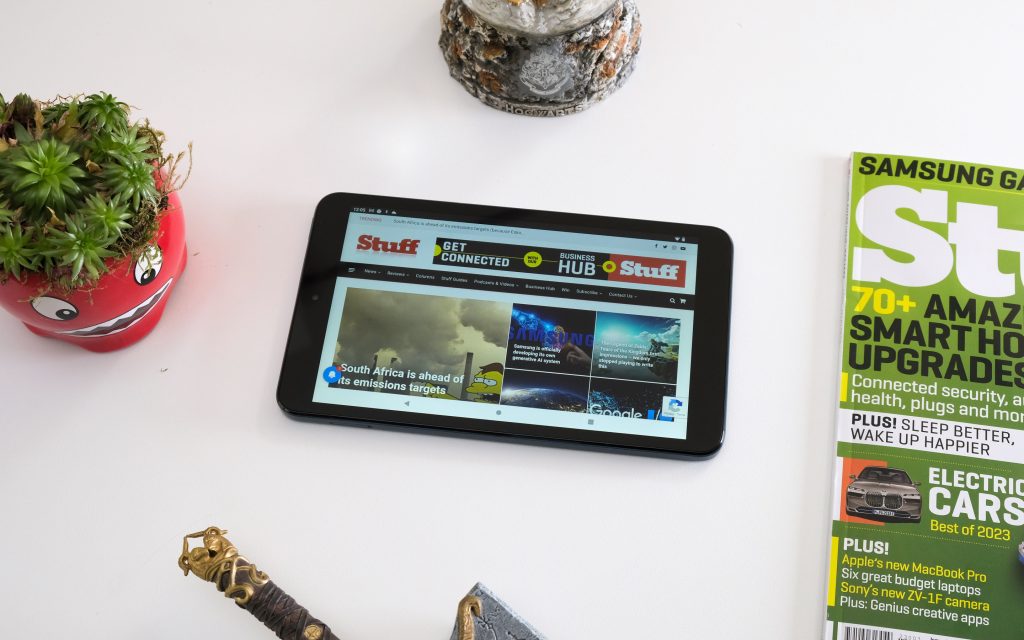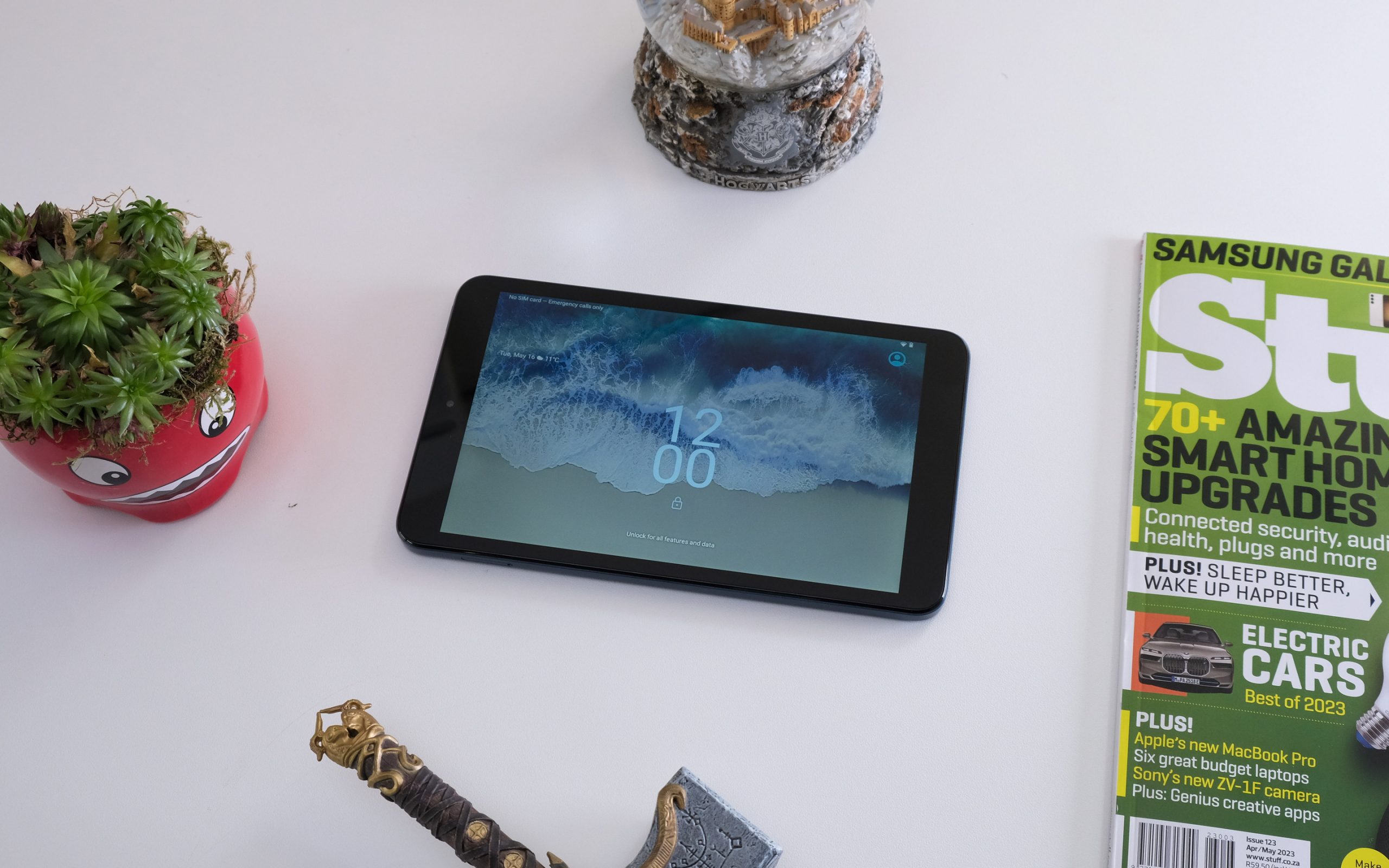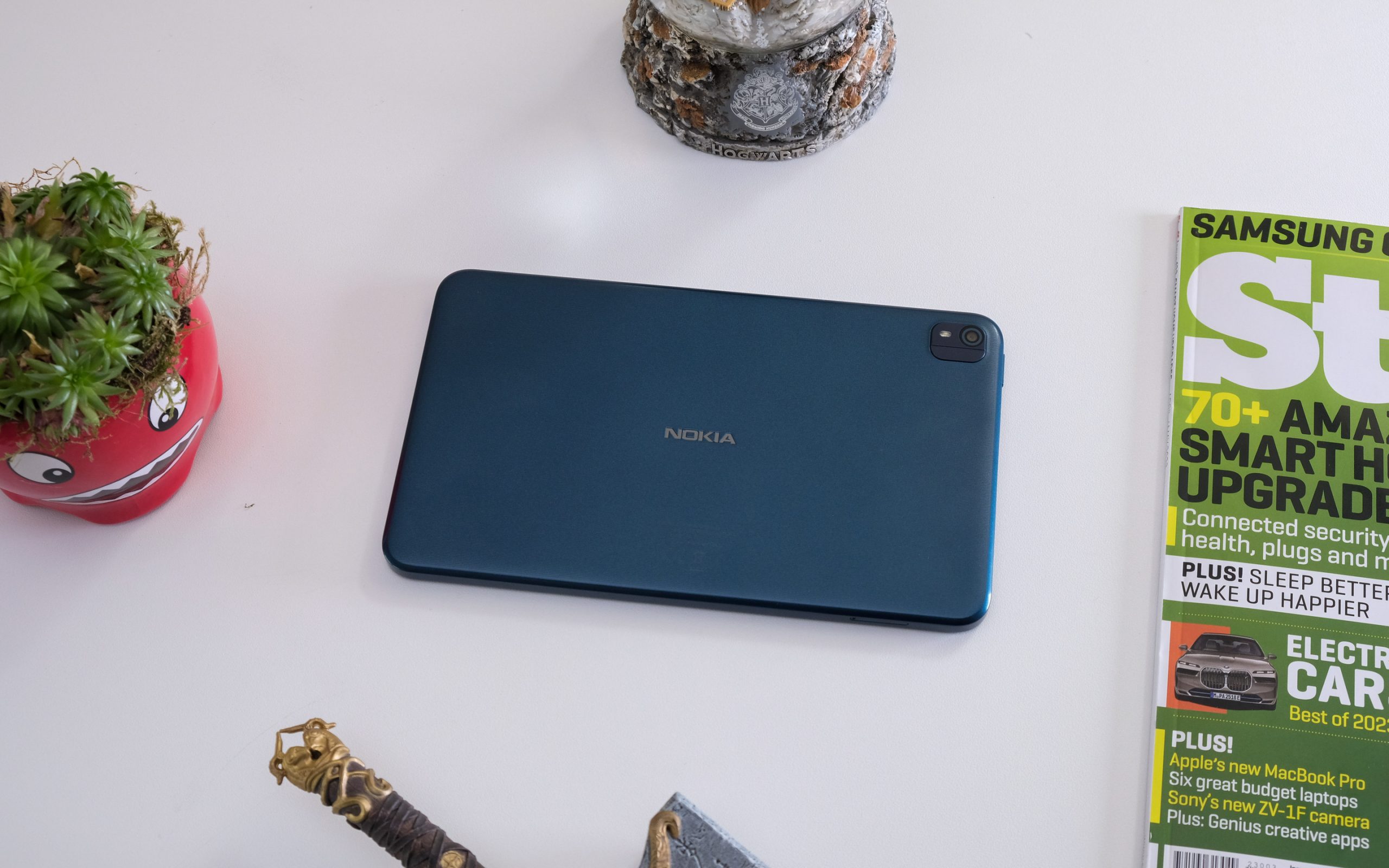It's hard not to like the Nokia T10. It doesn't have the most advanced features and it's not the best looking tablet you'll ever encounter, but it'll keep you busy while you're seething during hour eight of what was supposed to be a two-hour load shedding block.
-
Battery
-
Display
-
Performance
-
Design
-
Price
Nokia devices have always had a certain sort of charm. They weren’t the flashiest things around but they were among the most desirable. Tablets like the Nokia T10 prove that little has changed since the company’s first cellular phone rolled out of the factory in 1992.
If you’ve been paying attention over the last decade, you’ll know that’s not strictly true. But history has a way of travelling in circles, especially if there’s money involved. In this specific case, money’s a factor but there’s not all that much of it. That’s good for you, if you’re in the market for a capable 8in tablet that’ll impress with its performance while leaving your savings less than depleted.
Bit of a curveball
The Nokia T10 doesn’t do anything really revolutionary on the design front. It’s packaged, rather happily, with a clear cover to protect the rear panel and edges from (some) falls which could be handy for a number of people. There is at least one odd change we weren’t expecting, but we’ll get to that in a second.
The front face is a conventional 8in slab of glass. There’s a substantial chin and forehead, as well as some thickness on the bezels down the edges, and the obligatory camera sensor in the centre which you can use for video calls. The rear end is mostly clear, with a small camera bump (which hosts the 8MP camera sensor and a flash) on the upper left of the textured plastic panel. The only other markings are a Nokia logo in the very middle of the tablet’s back.
It’s the edges of the tablet that caught us off guard. There are speaker vents on the top and bottom (which become left and right in landscape mode, which you’ll use for Netflix and the like). There’s a USB-C charge port at the base and a 3.5mm audio jack on top. But the power button… has moved away from the volume rocker to sit on top of the tablet. That change alone killed years of muscle memory. We’re used to the power button waking the screen of our devices and having that button up top is… jarring. But at least Nokia provides that case, which accounts for the weird placement.
Watch this space
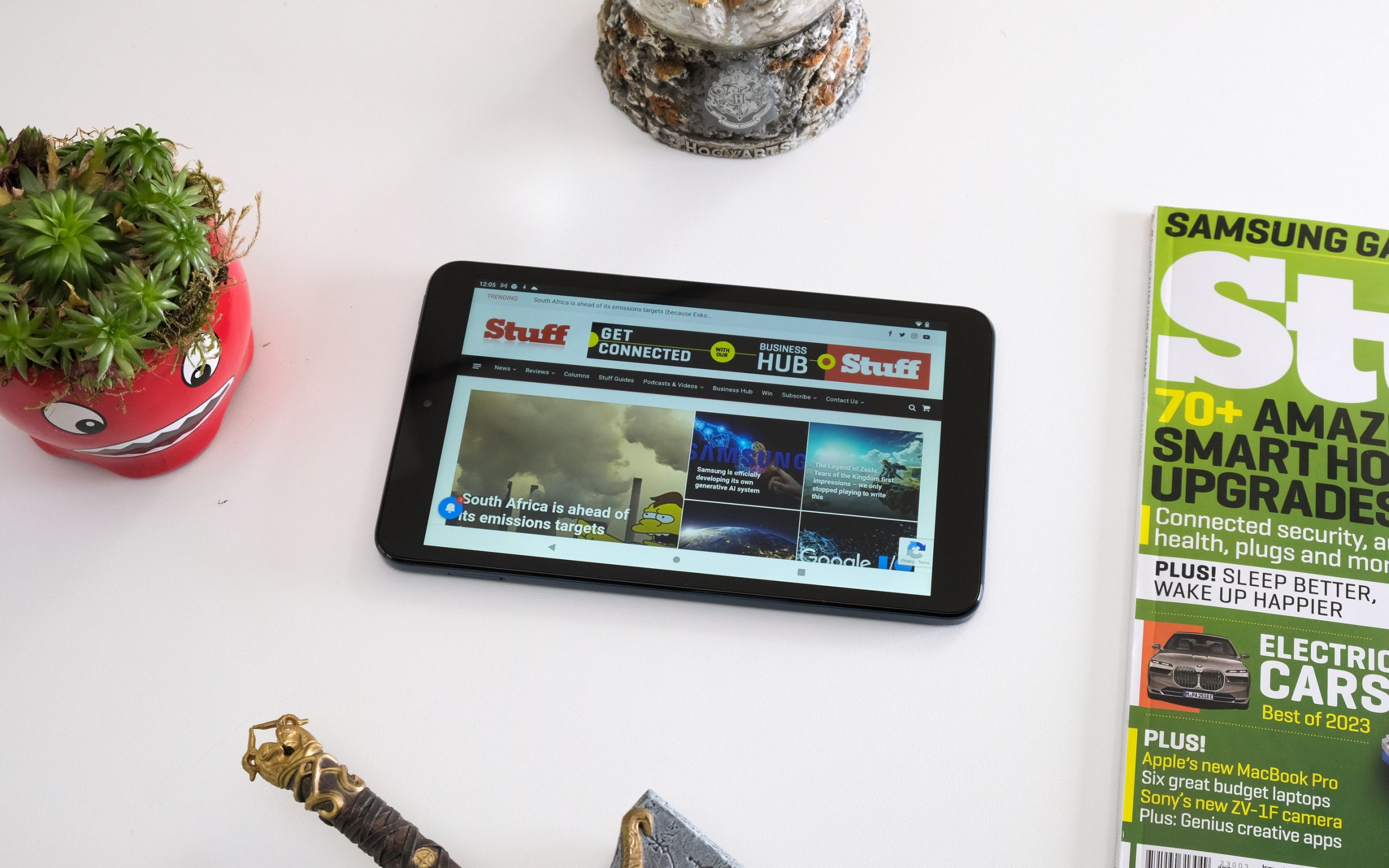
Given the Nokia T10’s price point, the 8in IPS LCD panel isn’t to be scoffed at. There’s an 800 x 1,280 native resolution, so images won’t be quite as crisp as if you’d spent double the money on your slate, but it’ll handle the job of some Netflix (at 720p) during load shedding without letting you down. The IPS panel is bright enough for a lit room unless you happen to work in a fluorescent light bulb factory, but daylight may prove too much for it.
That is about in line with what you’d get from competitor brands’ tablets at this size and price point. Colour reproduction is largely cool in tone, as opposed to the vibrant scheme Samsung’s contender brings to the table. That’s a matter of taste, but we’d prefer the more vivid expression from our tablets. Sorry, Nokia T10. It’s us. Not you. Promise.
The Unisoc T606 processor and 3GB of RAM sitting in the middle of this thing try their best but you really shouldn’t expect high-end performance. There’s some evidence of slowdown during navigation and running multiple apps will get old fast. The main usage case is for passive media consumption. Scrolling through a feed or kicking back to watch a movie is your best bet.
Built to last?
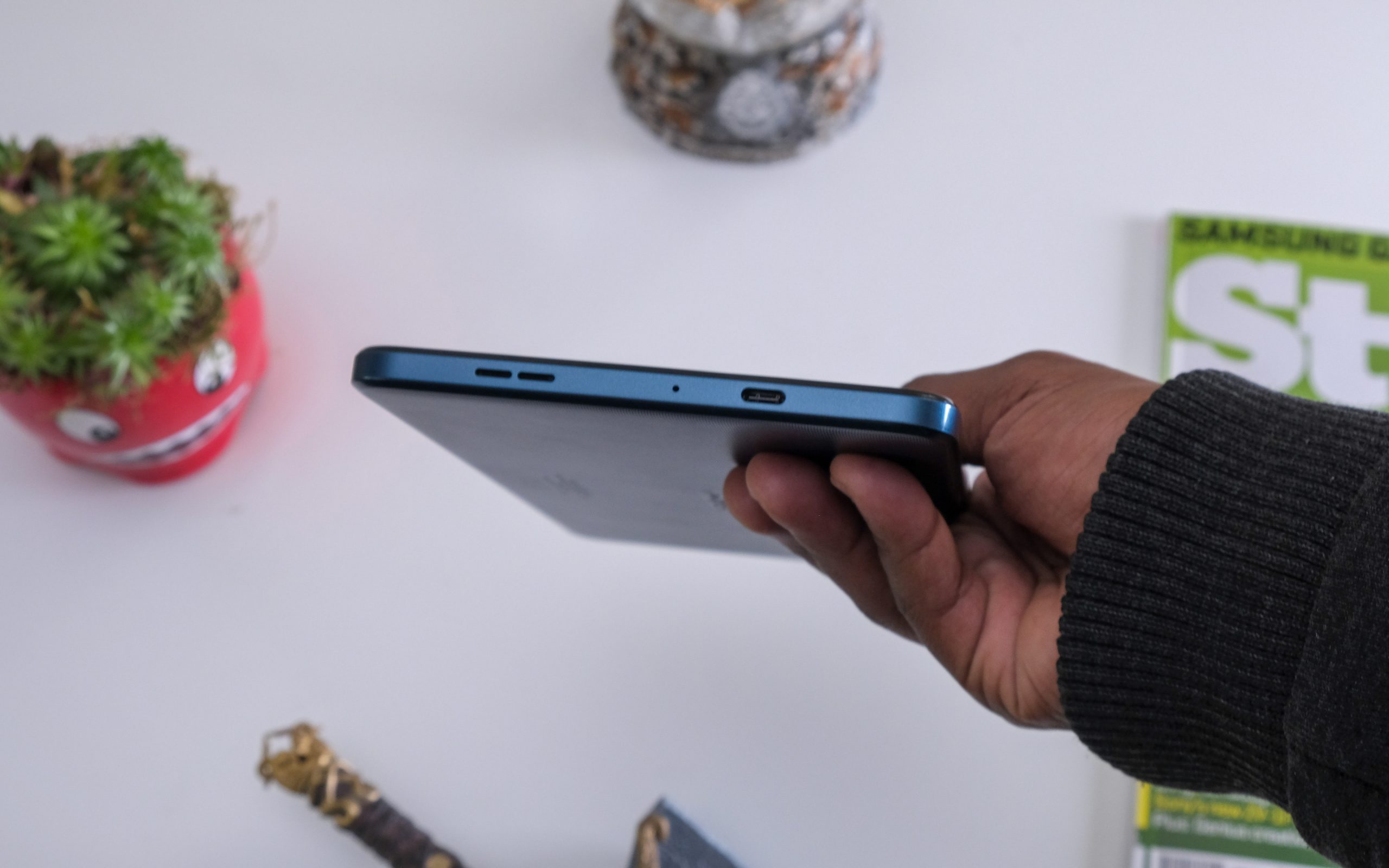
The Nokia T10 offers users a little chunk to go with their screen. You can look at this two ways. Yes, that’s typical of devices further down the price bracket but it also offers the opportunity to be a little rougher with it. It seems like it could take the punishment. We’d happily hand this one, suitably encased, off to a small child and only experience the normal amount of worry about the display. The rear section, with its textured panel and plastic build, will probably emerge from any ill-treatment unscathed. Unless that treatment involves water.
The other aspect is the battery. There’s real potential here as a long-distance or load shedding entertainment device. It’ll last close to twelve hours when you’re full-screening some action from your favourite streaming service, so civilised usage should see it lasting a few days in between charges. But if you’re a fan of long sessions in the smallest room (to the point where your legs stop working — that’s super unhealthy, by the way), this is the companion you want to have along.
Bluetooth and a 3.5mm audio jack mean you have consumption options if you’re using the T10 as a go-to-bed device, too. You can watch Bad Boys 3 on endless repeat, and whoever’s nearby doesn’t have to listen to it. Win-win.
Oh. Those guys
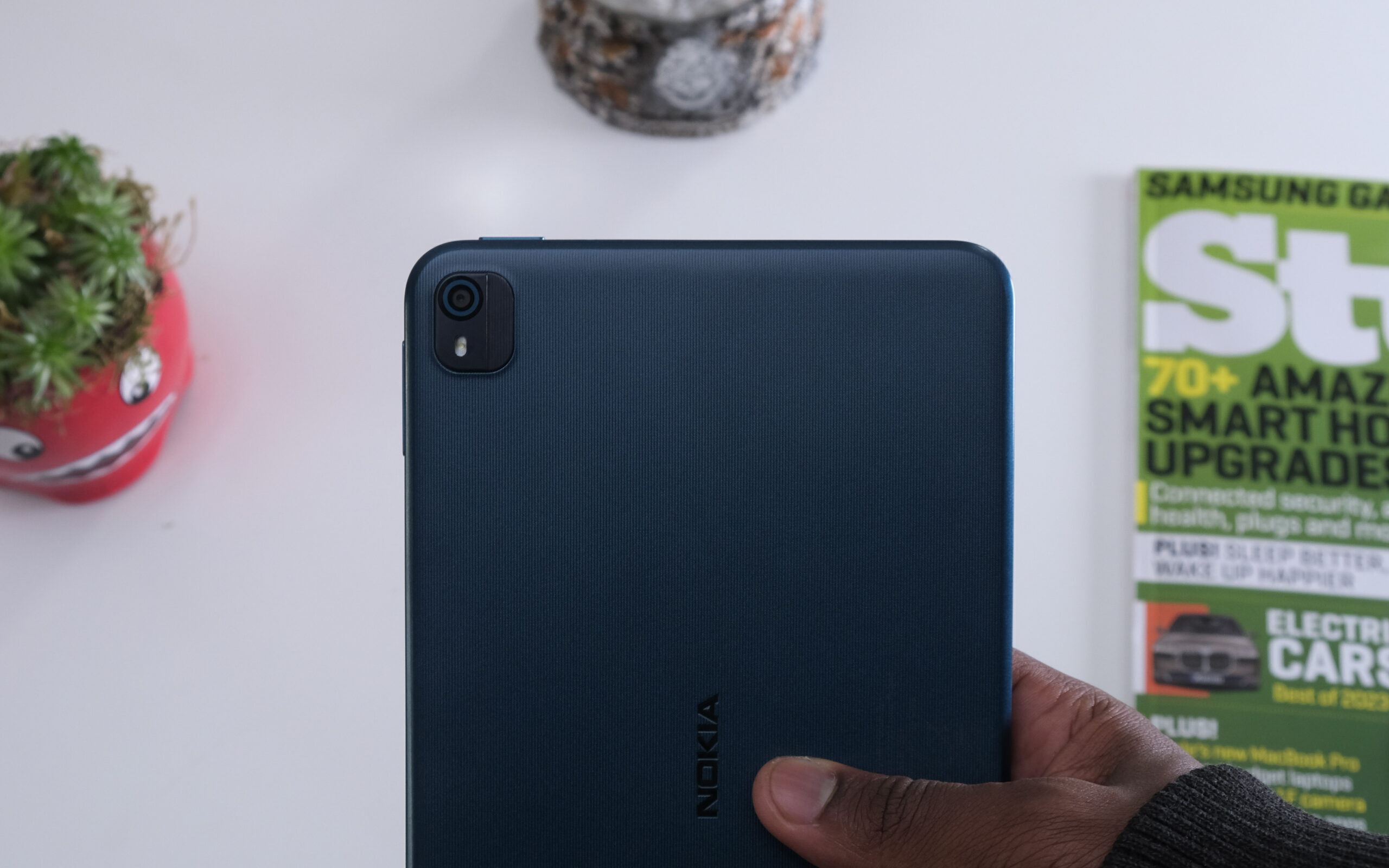
The only other aspect we have yet to touch on is the Nokia T10’s camera. There’s a single sensor on the back, to go with the already-mentioned selfie camera. The front 2MP sensor is good enough for video calls but it’s not the foot you’ll want to put forward if it’s an important interview or something.
The back is packing an 8MP camera that supports autofocus and includes an LED flash. If it’s the camera you happen to have in your hand, then it’s the best it can possibly be. If, on the other hand, you have literally any smartphone and enough time to switch to it, you can do better. Far, far better.
Nokia T10 verdict
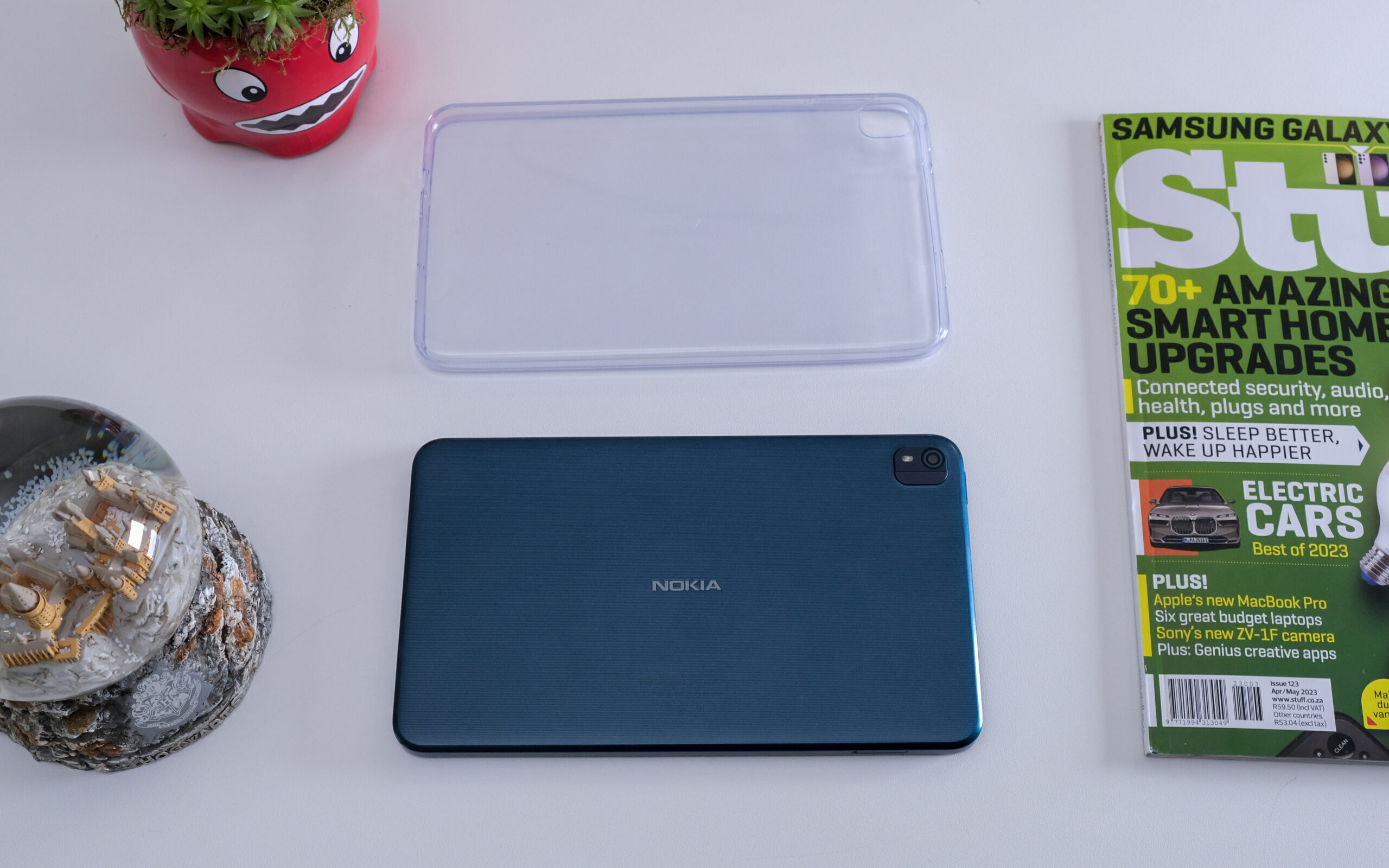
If you want one of these tablets, expect to pay about R3,000. You may find it cheaper but not considerably so. It’s a fair price for the Nokia T10, considering how long it’ll receive software updates. But it’s also a slick bit of hardware. It’s not flashy but it feels like it’ll outlast a rambunctious child (even if it probably won’t). There are some drawbacks. It’s only splash-resistant and not the kind that merits an actual IP rating, so it’s doomed if it lands in a bath. But that’s normal for a R3,000 branded tablet, no matter who you buy it from. The best thing about it is that you know what you’re getting and who you’re getting it from. And, if something goes wrong, you know who to complain to. You probably won’t have to do any of this, but it’s nice to have the option.

